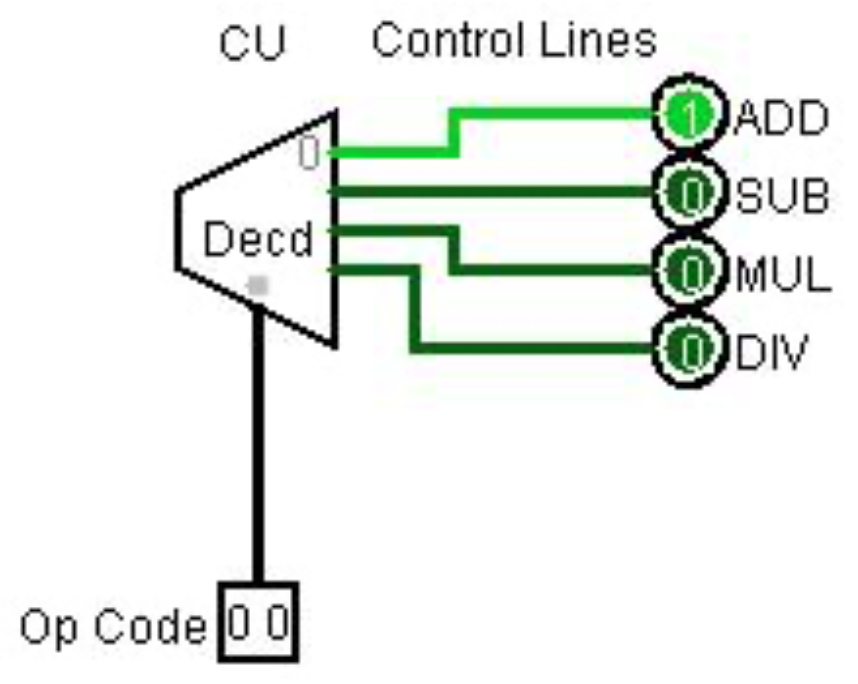7.1: Introduction
- Page ID
- 26988
Decoders are circuits which break an n-bit input into 2n individual output lines. For example, a decoder could break down 2 bit operations code into 4 separate operations. The operation code tells the CPU which operations to run. A 2 bit operation code is summarized in the following table. Here the code 00 corresponds to the operation ADD, 01 corresponds, to SUB, etc.
|
Code |
Operation |
|
00 |
ADD |
|
01 |
SUB |
|
10 |
MUL |
|
11 |
DIV |
The Control Unit (CU) of the CPU would break the binary number down so that each operation would match exactly one control line. This is called a 2-to-4 decoder since 2 input bits are converted into 4 output lines. A schematic of the decoder to implement this CU is shown in the figure below.

Most CPUs support instruction sets that are much larger than simply ADD/SUB/MUL/DIV, and thus a 2-to-4 decoder is not that common, however the principals used to create a 2-to-4 decoder are the same even as the size of the decoder becomes larger. This chapter will only look at the 2-to-4 decoder. Larger decoders will be considered in the exercises at the end of the chapter.


